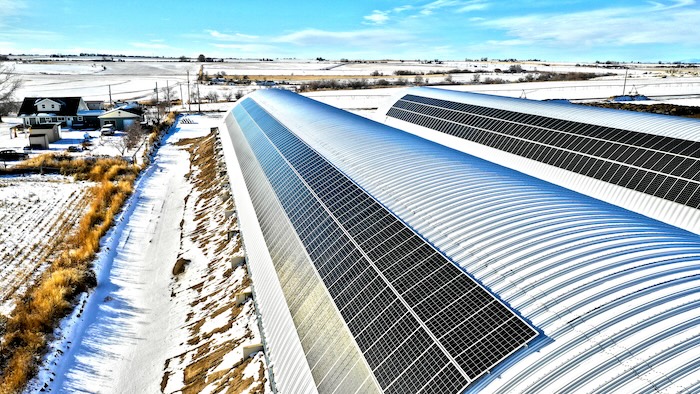Solar Energy’s Success is a Win for Everyone
In March of this year, the International Energy Agency (IEA) provided new data to show just how significant the increase in renewable energy has been across the world. Not only are solar, wind, and other forms of clean energy dominating the options available, but they are reducing and eliminating polluting forms of energy generation as well.
The environmental benefits of this rise in the deployment of renewables are creating a hopeful path for stabilizing the emissions that contribute to extreme weather, at a level that will avoid the worst effects of an altered global climate system. Clean energy technologies have been able to achieve adoption despite market and political headwinds.

There are some important and encouraging wins to highlight in the IEA report relating to clean energy technologies in general, and solar specifically. Let me share a few with you.
Global emission reduction: At the global level, the deployment of solar PV over the last five years avoids around 1.1 Gt (gigatons) of emissions annually. That is equivalent to the annual emissions of Japan’s entire energy sector. In certain markets, the impact is even more significant. In Australia and New Zealand, for example, deployment of solar PV over the last five years annually avoids an amount of CO2 equivalent to almost 10 percent of that region’s total annual emissions from energy production in 2023. The deployment of clean energy production, solar PV, wind power, and nuclear power (as well as clean technologies, electric cars, and heat pumps) avoided around 2.2 billion Gt of emissions annually between 2019 to 2023. Otherwise, the increase in CO2 emissions globally over the same period would have been more than three times larger than it was. The benefit doubles when using clean energy to charge electric vehicles, which then avoids the C02 emissions of gasoline and diesel fuel.

North American solar energy added to the grid: Here in North America, the solar energy story is brighter than ever. In the US, the Solar Energy Industries Association (SEIA) released their 2023 market data showing that there has never been a year with so much solar energy added to the grid. The US added a record-setting 32.4 gigawatts (GW) of solar capacity in 2023, a 37 percent increase from the previous record set in 2021, and a 51 percent increase from 2022. It is the first time in 80 years that a renewable electricity source has accounted for over half of annual capacity additions to the grid. The last time annual capacity additions were that large was when hydro power generation was built out on a large scale in the 1940s.
Residential rooftop solar adoption – power to the people: The growth in renewable energy adoption saw over 800,000 Americans adding solar to their rooftops. Homeowners installing solar is one of the optimal ways the economic benefits from this energy transition can benefit both people and the planet. In recent examples from Massachusetts and Florida, the importance of enabling solar power for homes and rooftops has been well accepted, and a future for solar power secured in durable public policies. The Massachusetts Department of Public Utilities estimates the expansion of net metering in that state will save homeowners $10 million a year with the regulatory change. That state has one of the highest roof-top solar penetration rates in the country (10 percent), which has been significant enough to drop polluting generating stations from the grid. The 1.4 GW natural gas fueled Mystic Generating Station serving the ISO New England grid operator used to be in operation each winter to prevent blackouts, but increased solar capacity has made the grid dependable enough to shut down Mystic entirely. Yes. Solar can produce in the winter!
Bringing solar manufacturing home to North America: The move towards increased domestic manufacturing of low carbon solar cells for use in solar modules is a significant next step in creating a sustainable economy driven by clean energy. These re-shoring manufacturing efforts not only ensure a reduction in carbon emissions for the solar modules, but also strengthen the domestic solar industry by creating a self-reliant supply chain. The positive effects of this move include job creation, product innovation, and increased competition, all of which can drive down costs and make solar energy more affordable. Local cell manufacturing will reduce the dependence on foreign imported cells, thereby enhancing energy security. It underscores the potential of the solar industry to pivot when opportunities are created, contributing to the nation’s economy. This is indeed a win-win situation for everyone involved — the solar industry, the economy, and, with reduced emissions, our planet.
Ted Ferguson is Director of Sustainability and Government Relations at Silfab Solar, which manufacturers commercial and residential solar panels in Burlington, Washington. Silfab will soon be manufacturing solar cells in Fort Mills, South Carolina.
Silfab Solar | silfabsolar.com
Author: Ted Ferguson
Volume: 2024 July/August










.png?r=3049)

